Operation of gas pipelines and equipment: calculation of residual life + regulatory requirements
The use of gas for domestic purposes is a common phenomenon. Centralized gas supply not only simplifies the solution of everyday tasks, but also allows you to create comfortable living conditions. Do you agree?
But we must not forget that gas is a rather dangerous substance, and therefore it is necessary to comply with the requirements fire safety when using it. It is also important that the operation of gas pipelines and equipment meets regulatory requirements and standards, compliance with which will ensure trouble-free operation and calculate the service life of various elements of the gas system.
But what are the basic requirements and what does the average consumer need to know about this? This is what this article will discuss in our article - we will consider the standards used regarding gas equipment and gas pipelines, standards and service life of this or that equipment. Let's talk about how to calculate the remaining service life.
The content of the article:
General requirements for the operation of the gas economy
Everything related to the use of gas is clearly regulated by the state. Domestic operation of gas pipelines must be carried out in strict accordance with the rules specified in regulatory acts approved by the government of the Russian Federation.
One of the fundamental documents is Federal Law No. 184 - Federal Law "On Technical Regulation". The chapters of this law define the principles of technical regulation, the procedure for various kinds of routine maintenance and verification of compliance with the standards, the procedure for state control over the operation of gas equipment.
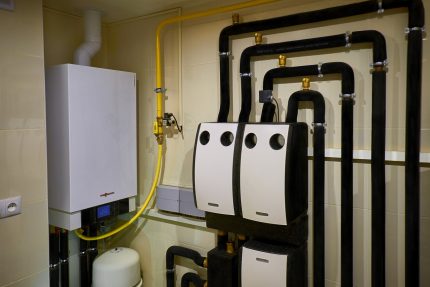
Another document that gas communications must comply with is the National Standard of the Russian Federation (GOST R 54961-2012), directly considering everything related to gas distribution systems and networks. It describes in detail the general requirements and operating standards of gas equipment systems, sets the life of gas pipelines.
The requirements specified in the National Standard must be observed by persons operating gas equipment. This applies to both legal entities and individuals, owners of private property and renting premises, residents of apartment buildings, owners of hotels, restaurants, technical industries, etc.
So, in the course of constant use of the gas pipeline and gas equipment, it is necessary to carry out the following types of work:
- Maintenance;
- maintenance and overhaul in accordance with the plan;
- emergency repairs in case of violation of the stable operation of the gas supply system;
- shutdown and dismantling of unused gas systems.
Work with gas equipment must be carried out with the strict observance of all safety requirements and recommendations specified in the technical documentation, which are developed in accordance with the operating characteristics of each individual gas supply system.
It is worth noting that in apartment buildings such processes as commissioning, conversion of gas supply systems and decommissioning should be provided by special organizations that are accredited to carry out this kind of work.
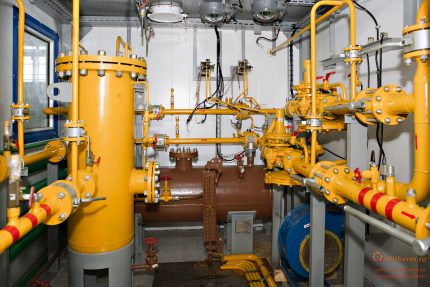
Residents of residential and apartment buildings, as well as in public and administrative buildings in which the gas supply system is implemented, must have the following documents:
- executive and design documentation for the construction of gas networks;
- acceptance certificate for gas consumption network;
- permission to launch gas equipment and commission gas networks.
If these documents are lost, they are restored by visual inspection, actual measurements and technical inspections, which will provide complete information on the gas equipment and pipelines in use.
Standards for the operation of gas equipment
In order to prevent incidents, in order to provide early warning of malfunctions in gas supply systems, a standard set of measures has been developed - Maintenance.
This term refers to a system for monitoring and ensuring the technical condition of the gas pipeline system in accordance with the standards; systematic cleaning and lubrication of components; adjustment, calibration and metrological verification of measuring elements, elements that support the operability and serviceability of gas pipelines, equipment and the gas system as a whole.
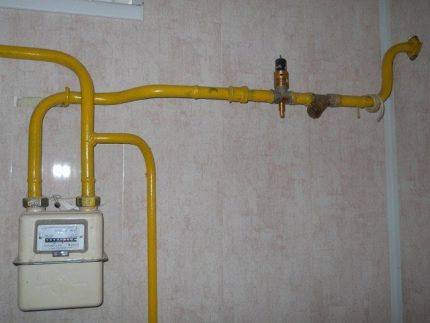
The complex of technical works for servicing gas equipment directly includes:
- leak test of the connecting elements of the gas pipeline, instruments and equipment in order to prevent gas leaks;
- inspection of valves;
- checking the automation of the operation of safety regulation devices and safety devices;
- checking ventilation systems in the room;
- check of electric lighting of rooms;
- system check gas leak alarm;
- checking the free access of clean air for burning gas;
- reconciliation of gas pressure parameters in all operating modes;
- cleaning the system from possible contaminants;
- measurement of electric potentials on gas pipelines and verification of their compliance with established standards.
All activities should be carried out in accordance with the schedule, which is approved in advance for each quarter of the year.
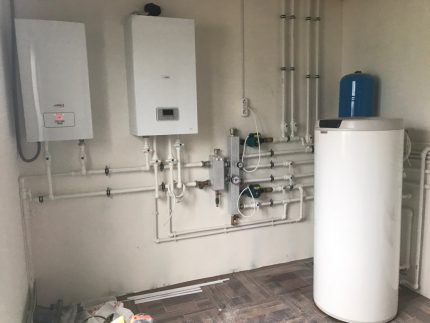
Rules for servicing gas pipelines
To maintain gas pipelines, common standards have been developed depending on the location of the gas pipelines: domesticthat are inside buildings, and externalthat are in basements, attics, special rooms.
And also depending on the material from which they are made - steel, copper or metal polymer.

Maintenance of external gas pipelines
When servicing external gas pipelines, the following operations must be performed:
- check for gas contamination of basements, wells, underground and attic structures, control pipes;
- monitoring the integrity of the system - identifying possible gas leaks using special devices or by external signs;
- checking the status of wall pointers;
- cleaning and removing dirt and water from carpets;
- gas pressure measurement;
- cleaning condensate traps from condensation formed.
If gas is detected in the basement of a building, the basements of buildings and structures are mandatory inspected, the first floors of buildings without basements within a radius of 50 meters from the gas detection site.
Steel piping inspection
The maintenance of gas pipelines made of steel consists of a number of works.
So, the verification procedure is as follows:
- Reconciliation of the actual conduct of gas pipeline systems with their design documentation.
- Checking freedom of access to gas pipelines openly laid indoors.
- Checking the tightness of all used connections on gas pipelines when connected to devices (meters, pressure gauges), connections with gas devices for gas leaks.
- Verification of compliance with the application flexible sleevesthat are used to connect the gas equipment to the gas pipeline and their condition.
- Checking the ease of operation of valves, the divergence and restoration of its performance.
- Checking gas leakage warning devices.
- Checking the health of the gas meter.
It should be noted that the leak test of the gas pipeline connections with devices and devices should be carried out using a special device or a foaming solution, which will visually foam in places with impaired tightness.
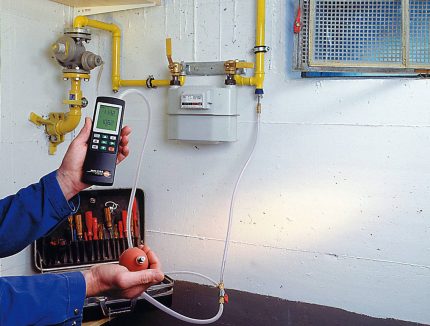
TO copper pipelines
To perform maintenance of copper gas pipelines, in addition to the above works from 1 to 7 points, the standard sets the following measures:
- Check in open areas the condition of the fasteners and pipes for mechanical damage.
- Check with the owner of the premises the layout of the hidden gas pipeline.
- Inspect the condition of the walls in areas where the gas pipeline is hidden.
If during the course of the maintenance it is revealed that it is necessary to replace the pipe section, fasteners, fittings, valves, then the gas pipeline must be repaired.
It is carried out no later than one day after the filing of the repair request, or immediately in case of malfunctions that could endanger the safety of the residents of the house.
Checking metal-polymer gas pipelines
When servicing metal-polymer gas pipelines, all work for steel and copper gas pipelines indicated above is performed. In addition to them, verification is added at the places of wiring through the internal structures of the building of the protective compartments of gas pipelines and fire-fighting bulkheads.
Norms of operation of equipment
The operation of gas supply systems must be carried out in accordance with established operating standards. In case of violation of the frequency of maintenance, calibration of devices, the appearance of irreversible consequences that lead to accidents and explosions.
The frequency of inspection of gas equipment is usually set by the manufacturer. However, in case of non-compliance with the deadlines, one should be guided by the period established by the National Standard of the Russian Federation.
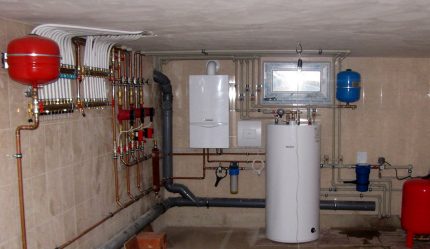
So, maintenance of household gas stoves, convectors and water heaters with a used thermal power of up to 30 kW should be carried out with the following frequency:
- period of use up to 15 years - according to the technical requirements of the manufacturer, or once every three years;
- the term of use is more than 15 years - once a year.
It should also be remembered that faulty equipment cannot be used - jokes are bad with gas. To protect yourself, we also recommend that you read the information on gas stove life.
The same requirements apply to heat generators whose power is less than 50 kW. If the capacity indicated above is exceeded, the maintenance must comply with the requirements of the manufacturer, and if they are absent, every year, regardless of the operating time of the equipment.
Sectional heating boilers must undergo maintenance at least once a year from the very beginning of operation, unless otherwise specified in their technical documentation. Read more about maintenance of gas boilers in this article.
Maintenance of gas stoves used in the catering facilities of enterprises, cooking, restaurants and other places of public catering, as well as grills and mini-bakeries should be carried out once a year, if their technical documentation does not instruct to carry out maintenance more often.
It is worth noting that seasonal equipment, if there are relevant requirements in the technical documentation, must be disconnected from the gas supply system with the installation of plugs on the gas pipelines at the end of the heating season.
Maintenance of gas pipelines and gas supply systems to apartment buildings and other buildings and structures should be carried out at least once during three years.
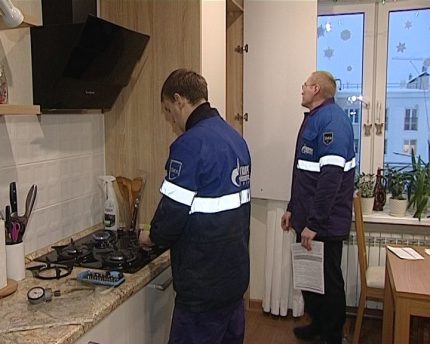
Calculation of the residual life of the pipeline
Despite the normatively established period of operation of the gas pipeline, which is at least 40 years, the technical condition must be assessed during maintenance - it corresponds to the actual service life. This is done by comparing the actual values obtained from the measurements with the established critical values of the limit state parameters.
The life span is greatly influenced by:
- gas pipeline location - held in the ground, located in the basement and in apartments;
- climatic conditions - high humidity, high or low temperatures, remoteness from the sea.
In addition to these natural phenomena, the physical and mechanical properties of gas pipes, as well as the state of their compounds, are influenced by other factors that arise at different time stages of operation. We talked more about the life of gas pipes in next publication.
To reduce the life of the pipeline can affect:
- making mistakes in the design of gas pipeline networks;
- low quality of work performed during their implementation;
- the use of materials that do not comply with anti-corrosion standards;
- low efficiency of electrochemical protection;
- carrying out current repairs in violation of established standards.
As a result, the life of the gas pipeline can be significantly reduced. The legislator has developed many formulas with which you can calculate the remaining service life of the pipeline.
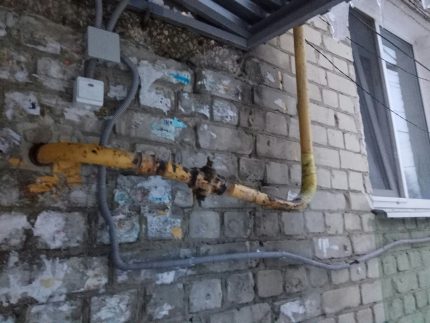
There are several parameters, the change of which leads to a decrease in service life:
- Efficiency of Electromechanical Protection, which is carried out by checking the level of security of the gas pipeline in time and length.
- Insulation condition. The criterion for the peak state is considered to be through and continuous damage. Assessment of the condition is determined based on changes in the parameters of the appearance of the coating, the type and material of insulation, the presence of damage to the coating.
- The degree of corrosion damage to the metal. This is the presence of through damage or residual wall thickness, which does not allow further operation of the gas pipe. The calculation results further affect the method of repair.
- Weld quality. In case of damage or gas leak detection, the joint is subject to immediate verification by non-destructive testing methods.
- Physico-mechanical properties of metal. Identification of possible degradation changes, such as a decrease in ductility, a decrease in toughness. The determination of these parameters is carried out by means of calculations and, depending on the deviation from the permissible values, the need for replacement is allowed.
The calculation of the residual life is carried out by the operating organization, which conducts technical diagnostics and evaluates the conformity of the technical condition of gas pipelines from the beginning of operation to the moment when 30 years pass. The frequency of calculations and assessment is every five years.

When defining a gas pipeline as workable further exploitation is permitted. At partially inoperative it is necessary to conduct additional technical diagnostics, which will reveal the deadline for its operation.
When determining the condition of the gas pipe as marginal - it is necessary to appoint a major overhaul or its reconstruction.
Conclusions and useful video on the topic
This video presents the procedure for servicing gas equipment and a gas pipeline in apartment buildings
An interesting video about the features of the operation of gas pipelines:
The standards and norms for the operation of gas equipment and pipelines have an important place in the system of ensuring the household needs of the population. Since both industrial and domestic gas handling is explosive, compliance with all standards and meeting operating requirements is, above all, a guarantee of preventing emergency situations.
If you recently encountered the issue of technical maintenance of gas-powered equipment or carried out a condition check in your home and assessed the performance of gas communications, tell other visitors of our site about this experience. The feedback form is located below.

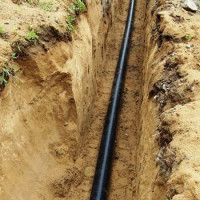 Gas pipe service life: gas utilization standards
Gas pipe service life: gas utilization standards 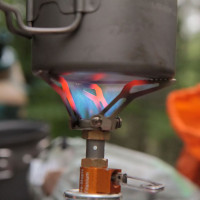 How long is the gas cylinder enough: gas flow calculation for typical gas cylinders
How long is the gas cylinder enough: gas flow calculation for typical gas cylinders 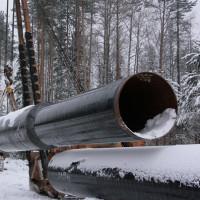 Calculation of the diameter of the gas pipeline: an example of calculation and features of the gas network
Calculation of the diameter of the gas pipeline: an example of calculation and features of the gas network 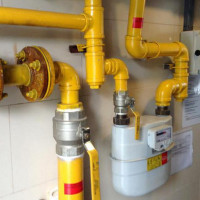 Paint for gas pipes: rules and regulations for painting inside the apartment and on the street
Paint for gas pipes: rules and regulations for painting inside the apartment and on the street  How much does it cost to connect gas to a private house: the price of organizing gas supply
How much does it cost to connect gas to a private house: the price of organizing gas supply 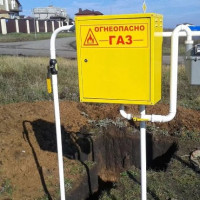 Which is cheaper and better - a gas tank or main gas? Comparative review
Which is cheaper and better - a gas tank or main gas? Comparative review  The best washing machines with dryer: model rating and customer tips
The best washing machines with dryer: model rating and customer tips  What is the color temperature of light and the nuances of choosing the temperature of the lamps to suit your needs
What is the color temperature of light and the nuances of choosing the temperature of the lamps to suit your needs  Replacement of a geyser in an apartment: replacement paperwork + basic norms and requirements
Replacement of a geyser in an apartment: replacement paperwork + basic norms and requirements